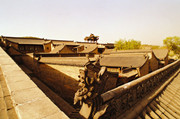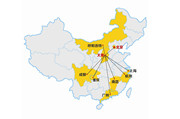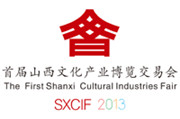Shanxi is one of the birthplaces of the Chinese nation with a long history and a gathering of talented people and cultural relics, which produces the saying-“Look at Shanxi and you can find thousands of years of civilization”.
According to the ancient legend, Huang Emperor and Yan Emperor, the ancestors of Huaxia nation, had both been to Shanxi. Yan Emperor tried hundreds of herbs at Hedong; Leizu breeded silkworms at Xia County; Houji taught cultivation in Jishan County.
Many beautiful legends such as “sky-patching by the Goddess”, “flood control by Da Yu” and “mountain movement by Yu Gong” all took place in Shanxi.
Yao Emperor Tomb and Shun Emperor Temple still respectively linger at the suburbs of Linfen and Yuncheng. The ancestral temple of the sky-patching goddess, namely Houtu Temple, is located at Wanrong County in Shanxi and has been perfectly preserved, attracting tourists to come in an endless stream.
As the capital of Northern Wei, Datong was a famous city at one time. At the end of Sui Dynasty, Li Yuan and his sons rebelled in Taiyuan , setting up Tang Dynasty and later Taiyuan was chosen as the northern capital of Tang Dynasty.
At the end of Yuan Dynasty and beginning of Ming Dynasty, Shanxi became a key area for emigration, sending out emigrants more than ten times; consequently, there was a saying going around throughout the country that “if you ask where my ancestors came from, they came from Hongdong Locust Tree in Shanxi”.
There were many celebrities from Shanxi throughout the history. The distinguished representatives from Shanxi include Guan Yu, a famous character during Three Kingdoms, Li Shimin, who is the founding emperor of Tang Dynasty, Wu Zetian, who is the only female emperor in Chinese history, Luo Guanzhong, who is the author of a classic novel The Romance of the Three Kingdoms, Sima Guang, the author of General Mirror for the Aid of Government, and many ancient well known poets, writers, dramatic composers or calligraphists such as Bai Juyi, Wang Wei, Liu Zongyuan, Guan Hanqing, Wang Bo and Fu Shan.
People from Shanxi are good at doing business. As the forerunners of China’s foreign trade, they are called “Jin Merchants”. At the end of Qing Dynasty, people in Shanxi initiated stamp numbers stores in China, specifically engaging in non-governmental agiotage. The branches were set up all around the country such as in Tianjin, Shenyang, Suzhou, Shanghai, Xiamen, Guangzhou and Chongqing, even set up overseas such as in Japan and India. Shanxi is the cradle of Chinese Financing industry and made many rich people. The common streets in Qi County, Taigu and Pingyao had numerous shops for agiotage and a large number of merchants, known as “the Chinese Wall Street”.
The ancient civilization with an opening-up and long history has also left worldwide known cultural and tourism resources and formed the profound cultural connotation in Shanxi. 72% of the extant ancient architectures built before Jin Dynasty are in Shanxi. There are 271 national key historical reservation units in Shanxi, accounting for 11% of that in the whole country. Among those, Wutai Mountain ranks first among the four Buddhism famous mountains. Datong Yungang Grottoes and Ancient City of Pingyao have been listed in the “World Cultural Heritage Directory”. The wooden tower in Ying County is the tallest and oldest wooden architecture in the world. Besides, the natural reservation areas such as Heng Mountain, one of the five famous mountains, the ancient garden in Jin Temple, which has been perfectly preserved, Guan Di Temple in Yuncheng, Pangquan Channel, Luya Mountain, Li Mountain and Mang River, offer unique natural, historical and cultural landscape with a variety of scenic views.
The main crops in Shanxi include corn, wheat, minor cereals, oil-bearing crops, cotton, vegetables and fruits. The area and the output of the minor cereals respectively account for one third of that of overall crops in Shanxi; that’s why Shanxi is known as “the kingdom of minor cereals”. The minor cereals produced in Shanxi have high nutritive value and good quality, well known worldwide for its unique health function. Millet, duck wheat, small red beans, oat and their processed products offer great market prospects. The unique products in Shanxi include: Jinci rice, Qinzhou yellow rice, Pingshun pepper, Shanxi Lu hemp, Huanqu hedgehog hydnum, Jishan jujube, Linyi guava, Fenyang walnut, Qingxu walnut, hawthorn, Shanxi Dangshen, Huaqi, Shangdang forsythia, Pinglu lily, Fen Chiew (Wine), Chu Ye Ching Chiew, Yu Ping Chiew, Chang Pu Chiew,Lin Quan Xiang Chiew, Sang Luo Chiew, Taigu cookie, Wenxi boiled cookie, Pingyao beef, Linyi sauce melon, Houma butterfly cup, Datong fur, Datong carpet, Datong bronzes, Yugang silk figurine, Pingyao glassed lacquer, and Datong sea buckthorn. The special food includes pared noodles, Gaoping cooked tofu, Quwo preserved beef, Taiyuan Dongpo eggplant, Fanzhiba cookie, Yellow River carp, Tai mushroom, Baode Wantuo, lamb entrails, Shaomai, bean paste cake, bread twist, Xiezhou mutton and steamed bread, Jinnan laozao and so on.




